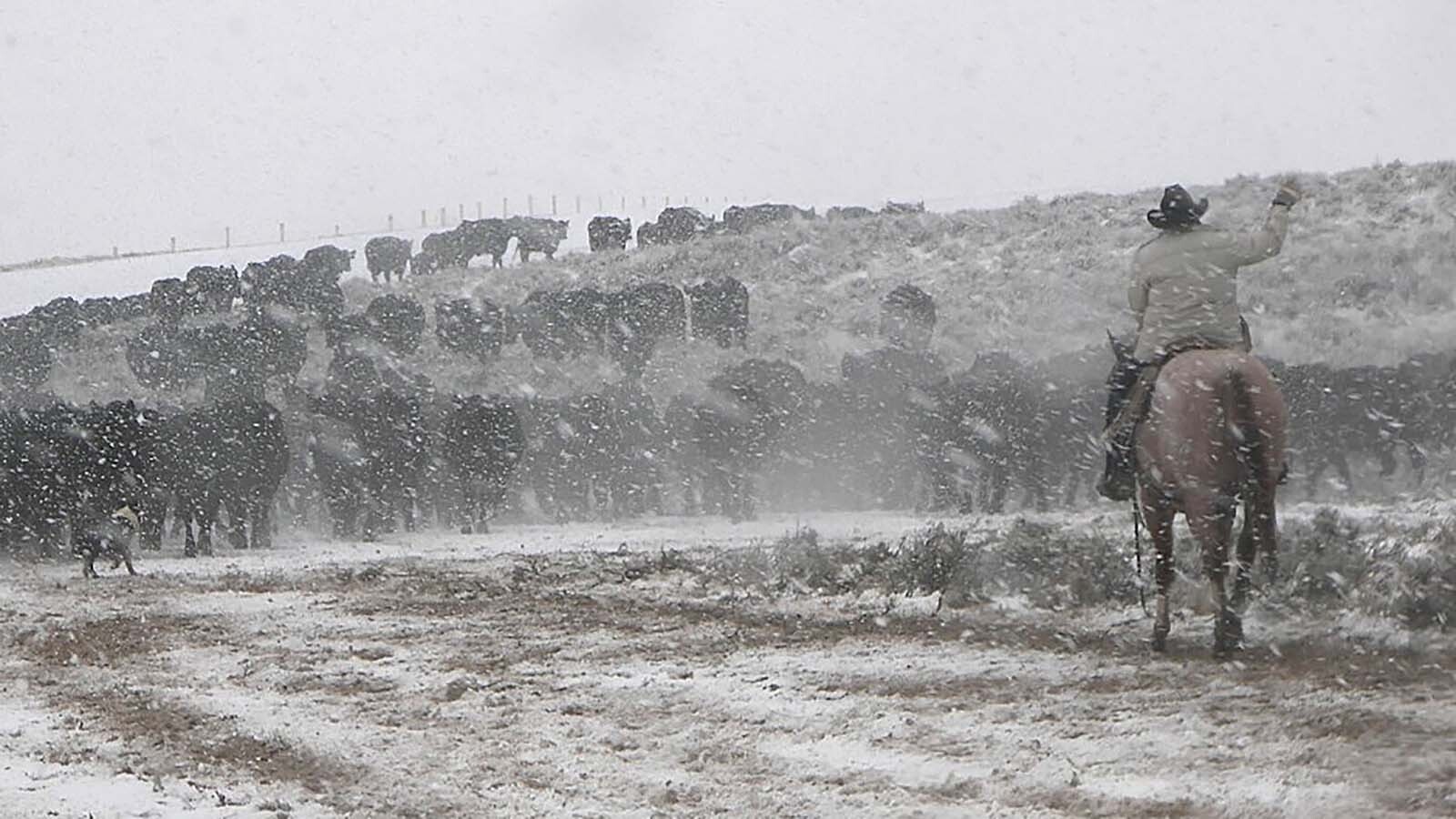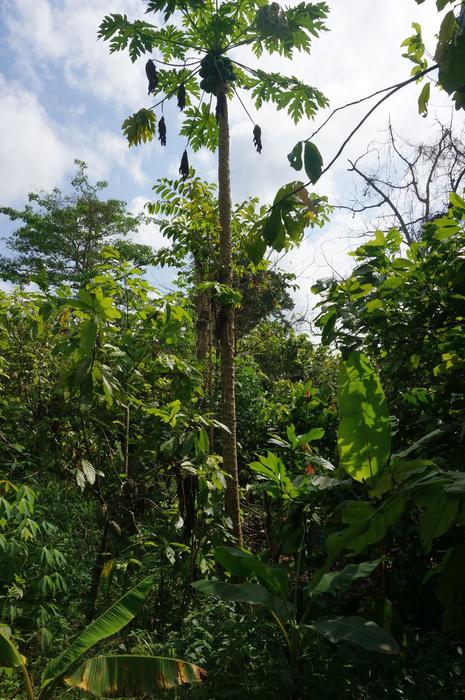Wyoming Rancher Uses Extreme Weather To Redefine Cattle Genetics, Grow Super Cows – Cowboy State Daily

Report on Sustainable Livestock Breeding Practices at Lucky 7 Angus Ranch
Introduction: A Case Study in Sustainable Agriculture
The Lucky 7 Angus Ranch in Boulder, Wyoming, provides a significant case study in the development of sustainable livestock management practices. Operating in a high-altitude, harsh climate, the ranch has pioneered breeding programs that align with several United Nations Sustainable Development Goals (SDGs), including SDG 2 (Zero Hunger), SDG 8 (Decent Work and Economic Growth), SDG 12 (Responsible Consumption and Production), and SDG 13 (Climate Action).
Methodology for Genetic Selection and Sustainability
The ranch employs a rigorous, data-driven approach to selective breeding, moving beyond traditional methods to enhance herd resilience and efficiency. This strategy is critical for achieving sustainable production in challenging environments.
Key Testing Protocols
- Scientific Feed Efficiency Testing: The ranch was an early adopter of systems that scientifically measure individual animal feed intake against weight gain. This allows for the identification and propagation of genetically superior animals that require fewer resources, directly supporting SDG 12 by promoting resource efficiency.
- Pulmonary Arterial Pressure (PAP) Testing: To address the challenges of high-altitude ranching (over 7,000 feet), cattle undergo PAP testing. This medical evaluation, developed by Colorado State University, identifies animals with a genetic predisposition to high-altitude cardiac disease. Selecting for low-PAP genetics ensures higher survival rates and animal welfare, contributing to the sustainable use of terrestrial ecosystems (SDG 15).
Alignment with Sustainable Development Goals (SDGs)
SDG 2: Zero Hunger & SDG 12: Responsible Consumption and Production
The breeding program directly addresses targets for food security and sustainable production through the following outcomes:
- Increased Feed Efficiency: Cattle that gain more weight on less feed reduce the overall resource footprint of beef production. This allows ranchers to produce more food with fewer inputs, such as land and feed, enhancing food security.
- Reduced Waste: By breeding healthier, more resilient animals, the ranch minimizes sickness and death loss. This reduction in livestock mortality is a key component of responsible production, ensuring that resources invested in raising an animal are not lost.
- Enhanced Food Production: The development of “Wyoming-tough” genetics creates cattle that can thrive in marginal lands, potentially increasing the global capacity for sustainable beef production and contributing to a stable food supply.
SDG 13: Climate Action & SDG 8: Decent Work and Economic Growth
The economic and environmental benefits of this model demonstrate a clear path toward a more sustainable agricultural sector.
- Environmental Impact: More feed-efficient cattle have a lower environmental impact. They consume less feed and, as a result, produce fewer methane emissions per pound of beef produced, contributing to climate change mitigation efforts under SDG 13.
- Economic Viability for Ranchers: The program improves the economic outlook for ranchers. Customers of the ranch’s bulls report significant savings on feed costs, directly increasing profitability. This makes ranching a more viable livelihood, addressing the economic sustainability targets of SDG 8.
- Future of Agriculture: By creating a more profitable and sustainable model, these practices can help attract a new generation to agriculture, addressing the challenge of an aging workforce in the industry and ensuring long-term economic growth.
Conclusion: A Model for Global Application
The work of James Jensen at the Lucky 7 Angus Ranch serves as a replicable model for sustainable livestock intensification. By integrating scientific testing with a focus on genetic resilience, the program demonstrates that it is possible to create cattle that are simultaneously more productive, environmentally friendly, and economically beneficial. This approach offers a tangible pathway to achieving multiple SDGs and securing a sustainable future for global food systems.
Analysis of Sustainable Development Goals in the Article
1. Which SDGs are addressed or connected to the issues highlighted in the article?
The article highlights several issues and practices in cattle ranching that connect to multiple Sustainable Development Goals (SDGs). The analysis reveals connections to the following SDGs:
- SDG 2: Zero Hunger: The core theme of the article is improving cattle ranching to produce beef more efficiently and sustainably, which directly relates to food production, food security, and sustainable agriculture.
- SDG 8: Decent Work and Economic Growth: The article discusses the economic challenges of ranching and how innovative practices can create “better economics for beef,” making it a more viable and attractive profession, thus promoting economic productivity.
- SDG 12: Responsible Consumption and Production: The rancher’s focus on creating “feed-efficient animals” that “eat less to produce a pound of beef” is a clear example of promoting sustainable production patterns through the efficient use of natural resources (feed).
- SDG 13: Climate Action: The article explicitly mentions that feed-efficient cattle are “more efficient in terms of methane,” linking the rancher’s practices to climate change mitigation by reducing greenhouse gas emissions from livestock.
- SDG 15: Life on Land: The effort to breed cattle with resilient genetics adapted to harsh environments, avoiding “weaker, ‘glass bubble’ genetics,” relates to maintaining the genetic diversity of domesticated species, which is a component of terrestrial ecosystems.
2. What specific targets under those SDGs can be identified based on the article’s content?
Based on the article’s content, the following specific SDG targets can be identified:
- Target 2.4 (under SDG 2): “By 2030, ensure sustainable food production systems and implement resilient agricultural practices that increase productivity and production… and that strengthen capacity for adaptation to climate change, extreme weather…”
- Explanation: The rancher, James Jensen, is developing a “resilient Angus cattle bloodline” specifically adapted to the “harsh conditions” of Boulder, Wyoming, which includes extreme cold and high altitude. His methods focus on creating cattle that can survive and thrive with fewer resources, which is a resilient agricultural practice.
- Target 8.2 (under SDG 8): “Achieve higher levels of economic productivity through diversification, technological upgrading and innovation…”
- Explanation: The article details Jensen’s use of technological innovation to improve his ranch’s productivity. He was the “first Angus breeder in the world to buy a scientific feed efficiency test system” and uses the Pulmonary Arterial Pressure (PAP) test to select the best animals. These innovations lead to better economics, as he states, “If you can feed your animal $300 a head cheaper than the neighbor, you just made $300 more than he did.”
- Target 12.2 (under SDG 12): “By 2030, achieve the sustainable management and efficient use of natural resources.”
- Explanation: The primary innovation discussed is improving feed efficiency. The goal is to identify and propagate “super cows” that “gained the most on the least feed.” This practice directly addresses the efficient use of a key natural resource (animal feed) in food production.
- Target 13.2 (under SDG 13): “Integrate climate change measures into national policies, strategies and planning.”
- Explanation: While the article focuses on a single ranch, the practice of breeding more feed-efficient cattle that produce less methane is a tangible climate change mitigation measure. Jensen notes this gives his cattle a “marketing edge” in markets concerned with emissions, demonstrating a private-sector action that aligns with broader climate goals.
- Target 15.5 (under SDG 15): “Take urgent and significant action to reduce the degradation of natural habitats, halt the loss of biodiversity and, by 2020, protect and prevent the extinction of threatened species.”
- Explanation: This target can be extended to include the protection of genetic diversity within domesticated species. Jensen’s work focuses on moving away from “weaker, ‘glass bubble’ genetics” and instead propagating a bloodline with strong, resilient genetics. This helps maintain a robust genetic pool adapted to specific, challenging environments, which is a form of conserving valuable genetic resources.
3. Are there any indicators mentioned or implied in the article that can be used to measure progress towards the identified targets?
Yes, the article mentions or implies several specific indicators that can be used to measure progress:
- Feed Efficiency Rate: This is a direct indicator for Target 2.4 and 12.2. The article explicitly describes Jensen’s scientific system to “track how much an individual animal is eating and how much weight it gained” to “find out which one gained the most on the least feed.” This ratio is a clear metric of progress.
- Cattle Survival and Sickness Rates: This indicator relates to Target 2.4. Jensen’s methods aim to create cattle with “less sickness, death loss.” A reduction in mortality and morbidity rates, particularly those related to heart failure at feedlots (which cost the industry “$1.4 billion annually”), would be a key performance indicator.
- Pulmonary Arterial Pressure (PAP) Scores: This is a specific, scientific indicator for Target 2.4. The PAP test is used to “evaluate which members of his herd can survive best at 7,000 feet” by measuring an animal’s sensitivity to altitude and its predisposition to heart disease. Lower scores indicate greater resilience.
- Economic Savings per Head: This indicator measures progress towards Target 8.2. The article provides a quantifiable example: “If you can feed your animal $300 a head cheaper than the neighbor, you just made $300 more.” This saving is a direct measure of increased economic productivity.
- Methane Emission Efficiency: This is an implied indicator for Target 13.2. The article states that feed-efficient cattle are “more efficient in terms of methane.” Progress could be measured by the amount of methane produced per pound of beef, with a lower value indicating improvement.
4. SDGs, Targets, and Indicators Table
| SDGs | Targets | Indicators |
|---|---|---|
| SDG 2: Zero Hunger | Target 2.4: Ensure sustainable food production systems and implement resilient agricultural practices. |
|
| SDG 8: Decent Work and Economic Growth | Target 8.2: Achieve higher levels of economic productivity through technological upgrading and innovation. |
|
| SDG 12: Responsible Consumption and Production | Target 12.2: Achieve the sustainable management and efficient use of natural resources. |
|
| SDG 13: Climate Action | Target 13.2: Integrate climate change measures into policies and strategies. |
|
| SDG 15: Life on Land | Target 15.5: Halt the loss of biodiversity (including genetic diversity of domesticated species). |
|
Source: cowboystatedaily.com
What is Your Reaction?
 Like
0
Like
0
 Dislike
0
Dislike
0
 Love
0
Love
0
 Funny
0
Funny
0
 Angry
0
Angry
0
 Sad
0
Sad
0
 Wow
0
Wow
0




















































.jpg.webp?itok=0ZsAnae9#)


























